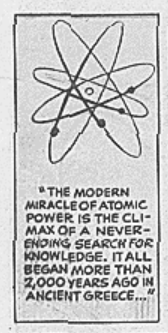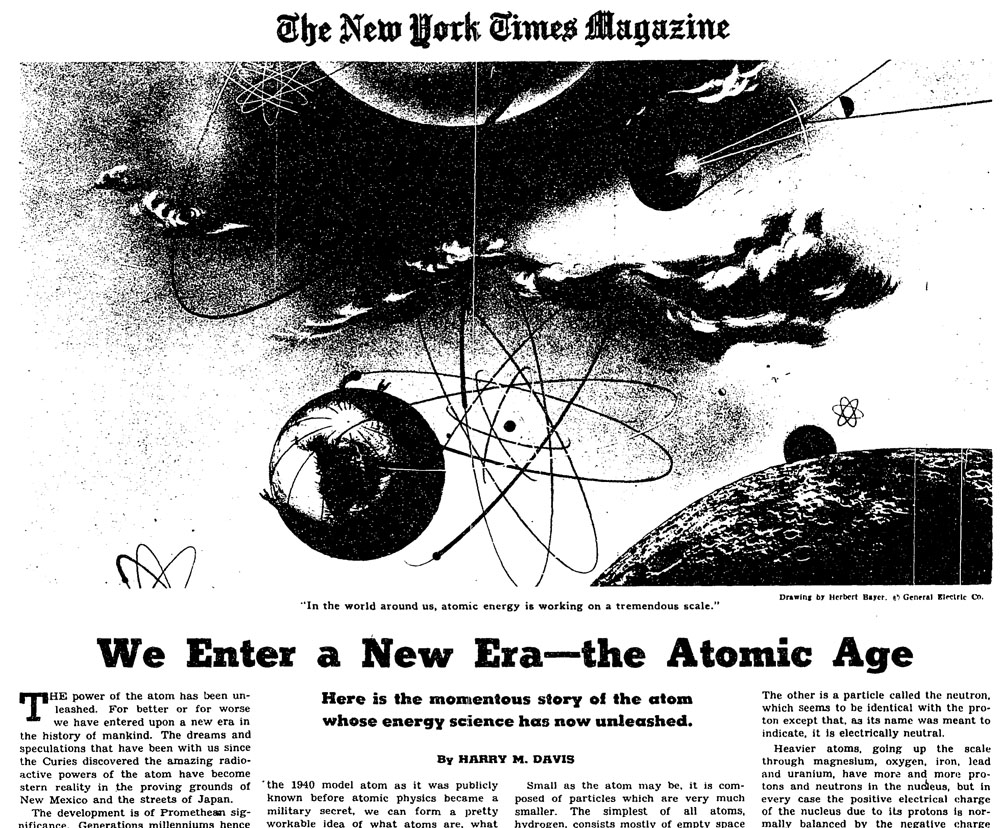There is a symbol or icon for an atom that is instantly recognizable and is associated with nuclear physics and with chemistry. A search for "nuclear atom symbol" (on 3/23/2023) shows what the essence of the symbol is:
While there are variations (3 or 4 orbits, nucleus shown or not, electrons shown or not), the orbits always seem to be circular, not coplanar, and stationary.
The US atomic energy commission adopted this icon in 1949, and both General Electric and and the town of Richland, WA used it in 1948, see below:
By this time, Hiroshima and Nagasaki had been destroyed by nuclear (fission) bombs. Both the US and the USSR were developing nuclear reactors with a view to produce electricity, and to power submarines. Quantum physics had developed more sophisticated (but less picturesque) models of electrons bound to the nucleus (in a wave-particle duality and considering the Heisenberg Uncertainty Principle, which did not support orbits).
Fifteen years earlier, the Bohr-Sommerfeld model posited elliptical orbits, as shown in this sketch by Bohr:
Source: https://physicstoday.scitation.org/doi/10.1063/PT.3.1978
My question is whether there are examples of the atom icon that are pre-1948 and might have been the model for the 1948 examples that are shown above. How did we transition from many ways of depicting the structure of the atom to this iconic common one?





